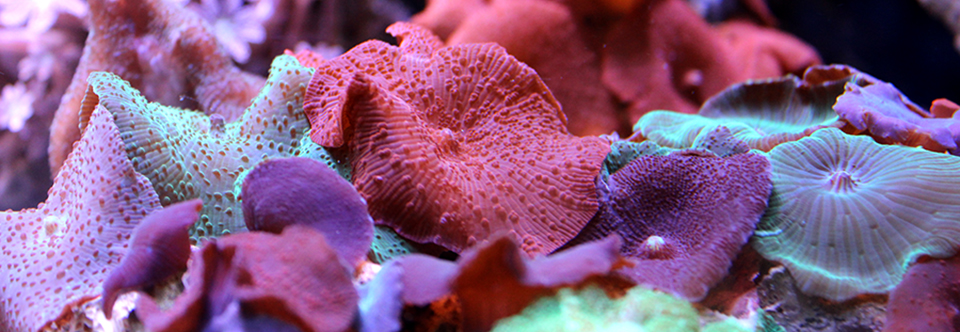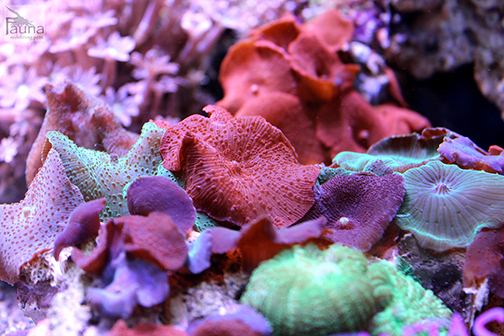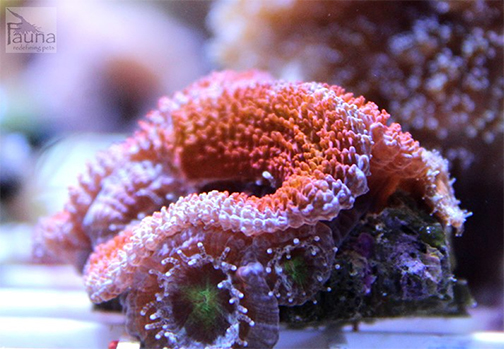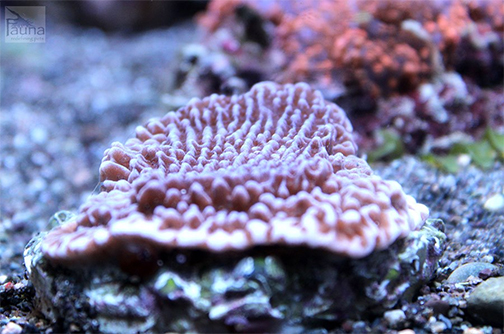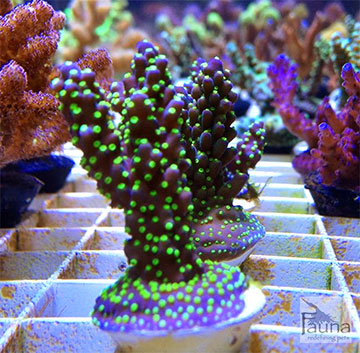Written by Christian Morehouse
Many people that start their first saltwater aquarium, myself included, seem to convince themselves that they would be happy with just fish. “Oh no. I don’t need to do corals. That’s too hard.” After a few months, they reach what seems to be a natural progression to stagnation. Their tanks are fully stocked with fish and they are learning new things every day. With a little experience and confidence under their belt, they decide to venture onto their first coral. That is when people make their way into Fauna and ogle at all the variety, but they have no idea where to start. Some corals are incredibly easy while others are particularly challenging. Different families and genera have different care and compatibility requirements. The types of coral you choose often help dictate the equipment and setup you will need.
This post will be about the four major classifications of corals and the general requirements for each.
Soft corals
Soft corals are often the easiest to keep and a great choice for a first coral and include, leathers, zoanthids, polyps, and mushrooms. They come in a variety of shapes, sizes, and colors and many offer a wonderful amount of movement to a tank.
They are hardy and are not particularly sensitive to less-than-perfect water quality, which allows the new owner a small learning curve.
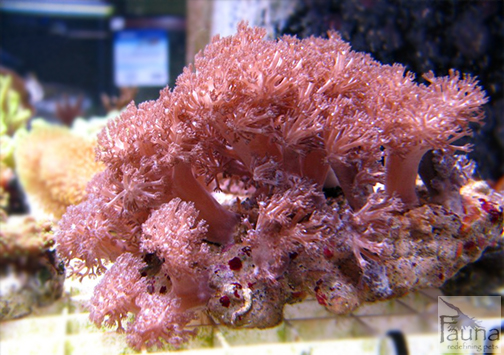
Xenia (Xenia elongata) is a particularly easy and fast growing coral that can add a lot of movement and coverage to your tank.
Most will also do well with lower levels of light and flow, which makes it an easy choice for someone just starting out who has not yet invested in a high-end light setup. However, they do need adequate amounts of light and should not be placed under standard florescent fixtures if expected to thrive. They also do not absorb high levels of calcium, carbonate, and other minerals, as they do not have a skeleton.
LPS corals
“Large Polyp Scleractinian” corals are a hobbyist’s classification for corals with a skeletal base and one or multiple large fleshy polyps usually ranging in size from about half a centimeter up. These corals are a good next step and often provide more color than a majority of the soft corals. Many also provide a high amount of movement to the tank such as goniopora and frogspawns. They need a higher level of light than most of the soft corals and are more sensitive to issues regarding water quality.
The main difference between keeping LPS corals and soft corals, is LPS will use calcium from the water to make their skeleton as they grow. This depletes the calcium, alkalinity, and magnesium levels of your tank. These three are very important in a reef tank and should be monitored closely with an accurate test kit. In the early stages, with just a few corals, weekly water changes with a quality salt is usually sufficient to maintain your levels.
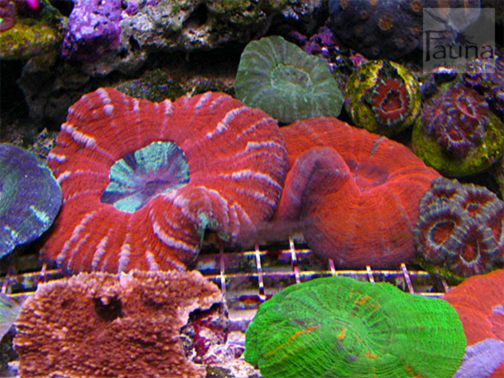
A cluster of mainly australian scolymia (Scolymia australis) can be an expensive, but beautiful way to add some color to your sandbed.
As your tank becomes more and more stocked, and starts looking more and more like a reef, you may have to start dosing to maintain these three important levels. But dosing is an entirely different article soon to come. LPS corals can also be particularly aggressive, and can actually sting other individuals if placed too closely. It is a good idea to ask or research a new species before placing it near the other corals in your tank. Different areas in your tank can provide different levels of light, flow, and room to grow. Proper placement is key.
SPS corals
“Small Polyp Scleractinian” are some of the most sensitive corals. They are hard to the touch and can have different growth structures such as branching, encrusting, or plating. They generally need very high light, strong water flow, and pristine water quality.
They include acropora, montipora, seriatopora (birds nests), stylophora, and pocillipora among others. Some species are significantly more tolerant than others and make good “starter sps” when a hobbyist is ready to venture into this category. They give no movement, at least not unless you were to look closely, but they do give an extreme level of color under the right conditions. Under poor conditions, individuals can easily die, “bleach,” meaning they turn white, or “brown out,” meaning that they lose their color from stress.
These corals should only be attempted in a mature reef tank with an experienced hobbyist. If you think you are ready to enter the world of sps, anyone in the store would be happy to chat with you about your system and if it is ready. If it is, we can recommend a good coral to start with.
Nonphotosynthetic corals
Nonphotosynthetic (NPS) corals are those that do not house the symbiotic algae zooxanthellae in their flesh. This algae is what provides the corals with food and sun protection. Corals that lack this algae often come from deep water or dark crevices where there is a surplus of free-floating food. They need an almost constant food supply while maintaining very clean water.
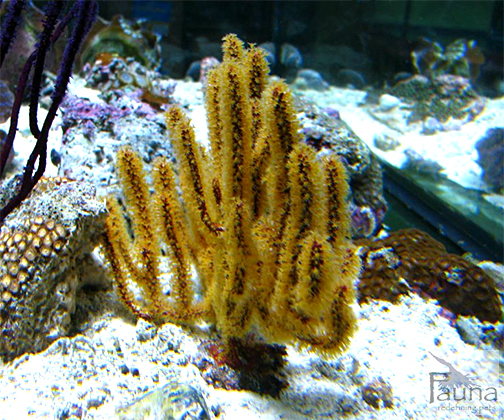
A nonphotosynthetic gorgonian. A good way to tell if your gorgonian is photosynthetic of not is to look at the polyps. If it is brown, it usually is. If it is brightly colored, it is not.
Examples are carnations, chili corals, sun corals, and many gorgonians. Nonphotosynthetic tanks also include many types of clams, scallops, tunicates, and other non-coral reef life. Different genera often require different food particle sizes, which means these tanks have to be fed heavily. Nonphotosynthetic tanks are usually designed for exactly that. It is not recommended to put most nonphotosynthetic corals in your standard reef tank.
Starting a reef tank, or even transitioning from a fish-only, is a slow but extremely rewarding process. Patience and research are important. Often, deciding the type of corals you want to keep will determine the setup you need. The next time you stop in to Fauna, please feel free to ask an aquarium specialist what the next step would be for you.
.
![]()
![]()
![]()
![]()
![]() To learn more about Fauna NYC, visit our website! Sign up for our eNewsletter for new animal arrivals, product discounts, and upcoming events.
To learn more about Fauna NYC, visit our website! Sign up for our eNewsletter for new animal arrivals, product discounts, and upcoming events.

